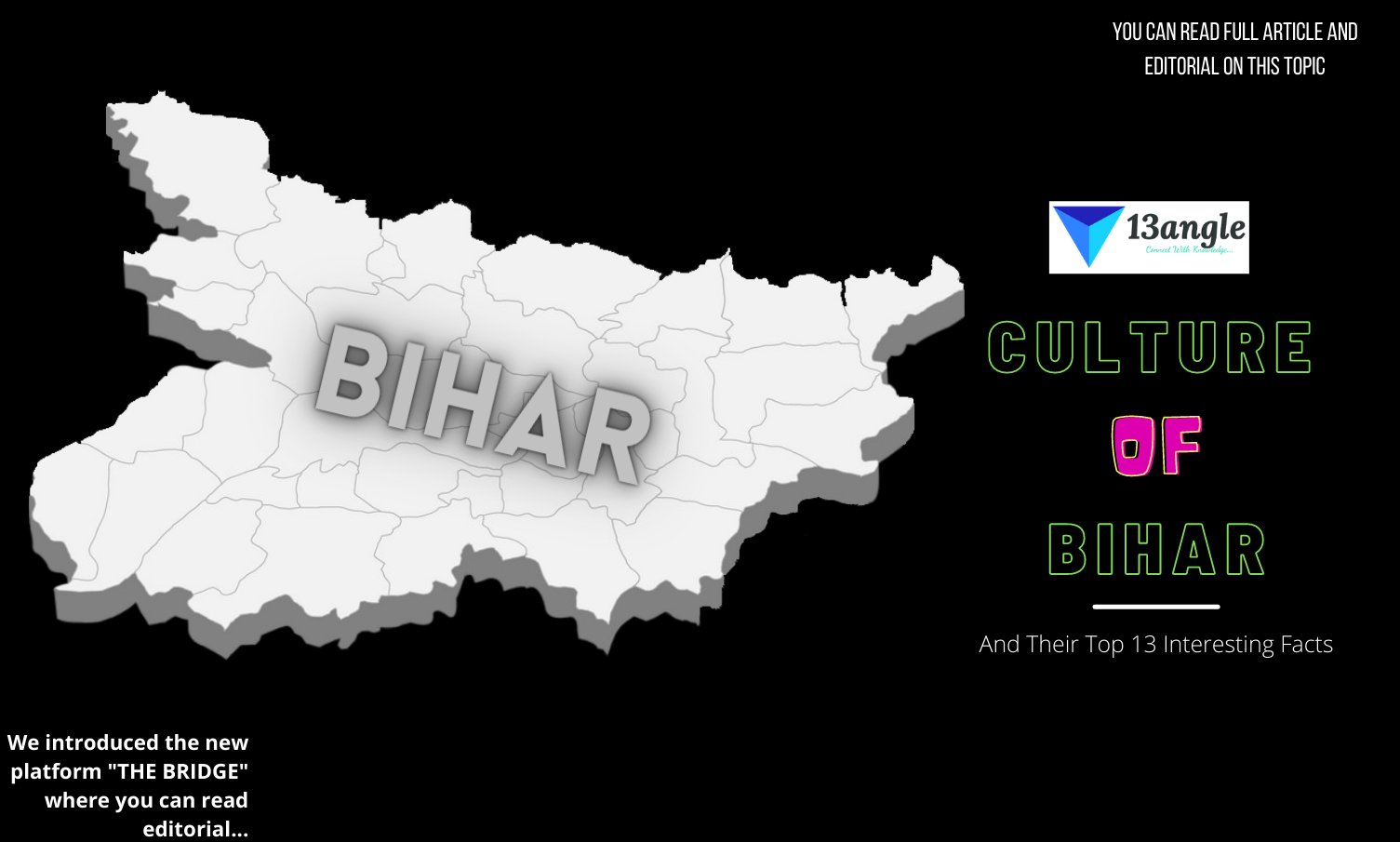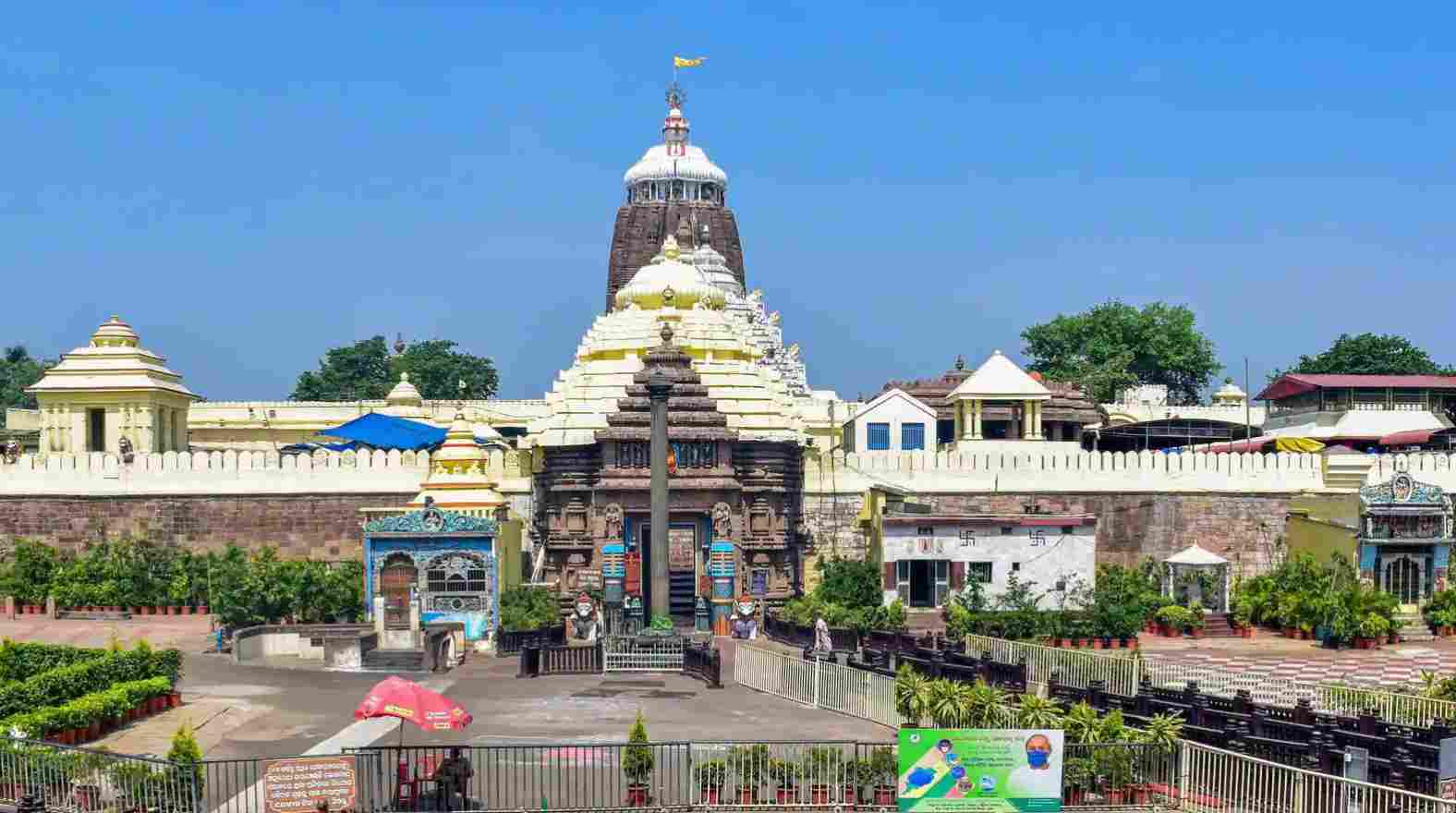
Introduction
Jagannath Temple is a Hindu temple located in Puri, Odisha. It is quite a famous temple all over India. It is the temple of Lord Jagannath. With Lord Jagannath, there is Lord Badabhadra and Lord Subhadra. It is commonly known as the Puri temple. It is not the original temple, it was rebuilt. Jagannath temple has thirteen other temples. It is one of the famous and important temples of Hinduism. It is also a historic temple whose structure was built millions of years ago. There are also millions of people who visit Odisha to gain the blessings of Lord Jagannath. It is a famous temple visited by thousands during a year. People from all over the world visit to gain the blessings of eternal God Jagannath. It is believed the hat Jagannath temple is one of the most visited temples and Lord Jagannath fulfills the wishes and desires of his devotees. Lord Subhadra and Lord Balabhadra are also worshipped by the devotees. Many festivals and activities take place every day in the Jagannath temple. There are also many unknown activities that happen in front of the eyes of visitors or devotees who come to worship.
Why It's Famous

Jagannath Temple, Odisha is famous for its patriotic Ratha Yatra, where the three principal deities are put in the chariots and pulled with the help of ropes.
There are also many activities that take place in the temple which cannot be explained scientifically which makes the Jagannath temple one of the unique masterpieces.
And to see these activities and to experience them many people visit the Jagannath temple. Including people from all over India, people from all over the world also visit the Jagannath temple and gain the blessings of Lord Jagannath.
Some of the Unexplained activities of the famous Jagannath temple:-
- As we all know that if the light is falling on any object, it produces a shadow on the opposite side of the light. But in the Jagannath temple, there is no shadow, not at any time of the day. It is an unexplained truth that is still unsolved by scientists and researchers.
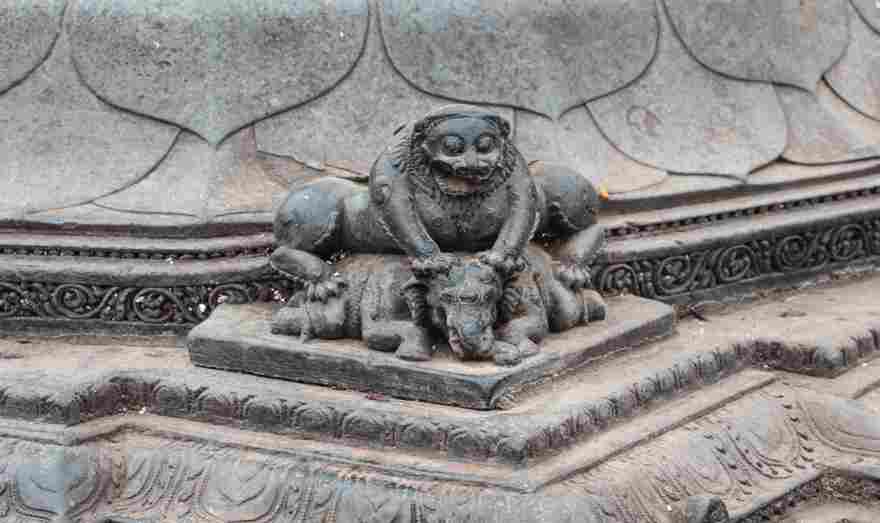
Another mysterious activity is the flag which is floating in the air at the top of the Jagannath temple. The flag floats in the opposite direction of the wind. It is a fact that any piece of cloth or anything that is floating, will float in the same direction of the wind, but it’s totally opposite in the case of a flag floating at the top of Jagannath temple.
The main food or the prasad which is made in the temple never gets short. No matter the number of people coming, the food is always made in the same quantity. Moreover, the food is made in pots by keeping one on another, but the topmost pot’s food is prepared first which is so far from the fire.
There are many more mysterious things that occur every day and are experienced by devotees. Furthermore, its logic is still not found and attracts many people and researchers to Jagannath temple.
History
King Chodaganga constructed the Jagannath temple. The construction was started by the king and during his reign, the assembly hall (JagaMohan) and chariot (Vimana) were constructed. The construction was completed by Anangabhima Deva in 1174AD. It was completed after Chodagangadeva’s death.
It was completed by Anangabhima Deva III.
The temple was conquered by numerous rulers and the count goes to eighteen. The temple was pillaged because of the enormous wealth present in it. Due to these attacks, to save the icons of Lord Jagannath, Balabhadra, and Subhadra were transferred to different places.
But at last, everything came to its normal, and the three eternal gods were placed in the Jagannath temple, Puri.
Puri’s famous Jagannath Temple holds a well-known place of importance for devotees.
It is believed that King Indradyumn built this holy shrine after Lord Vishnu blessed him and guided him in his dreams to find Nila Madhava.
King Indradyumn found an iron rod floating during one of the holy dips in the river. It is believed that the floating rod is the heart of Lord Vishnu when he then whispers to him that it will remain on the land forever. The king then ran with the rod to Lord Jagannath and placed it in him carefully. Moreover, he never allowed anyone to ever see or touch the rod.
Structure
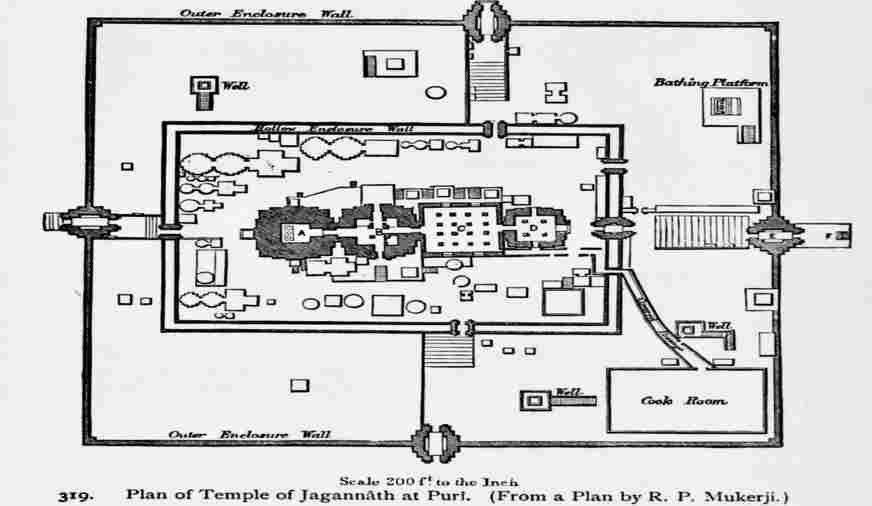
The Jagannath temple is classic Oriya architecture that covers an area of 400,000 square. The temple is enclosed by two concentric walls 20 feet high. The outer wall is called Meghananda Pachauri, and the inner wall is called Kurma Bedha which surrounds the main temple, which has 120 shrines and temples.
The Jagannath temple has four structures, they are:
Vimaana, Bada Deul, or Garbha-gruha is a sanctum, where the deities are lodged on the Ratna Vedi.
Mukhasala, the front porch, Natamandir which is the dancing or audition hall. And the Bhoga Mandapa which means offerings hall.
The layout of Jagannath temple, Puri, Odisha
- Nila Chakra is on the top of the Jagannath temple with a different flag. Patita Pavana is hoisted on the chakra daily. Eight spokes are present in the chakra called Navagunjaras. Ashtadhatu means eight elements, from which the chakra is made of. 11m is the circumference of the chakra and is of height 3.5m.
Geographical Area
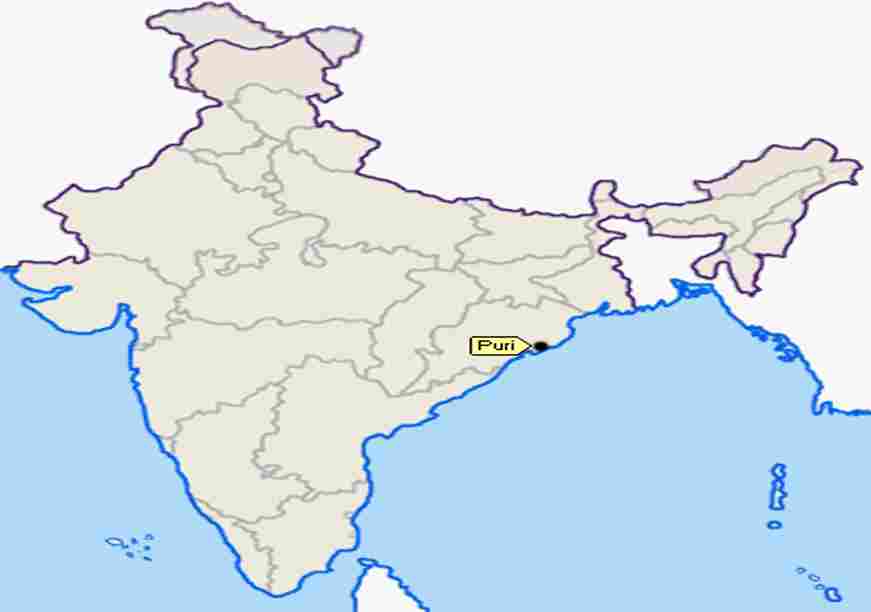
- Jagannath temple’s geographical coordinates are 19°48′17″N 85°49′6″E. A recent SC order revealed that the Jagannath temple owned an amusing 60,418 acres, or 244.5 square km, of land within and outside Odisha. The land owned by the temple is 15 times the size of Puri town, which is 16.33sq km. Moreover, the temple owns several quarries and mines, but the licensees are not paying any dues to the shrine. Jagannath temple has an elevation of 65 m which is 213 ft. The main temple is a curvilinear temple and crowning the top is the ‘Nilachakra’ (an eight-spoked wheel) of Lord Vishnu. It is made from Ashtadhatu, which signifies the eight elements and is considered sacrosanct. Among the existing temples in Orissa, the Jagannath temple is the highest. The temple tower was built on a raised platform of stone and, rising to 214 feet which is 65 m above the inner sanctum where the deities reside, dominates the surrounding landscape. The pyramidal roofs of the surrounding temples and adjoining halls, or mandapas, rise in steps toward the tower like a range of mountain peaks.
About Lord Jagannath

The word Jagannath means the Lord of the universe. As it is a combination of two words ‘Jagat‘ and ‘Nath‘ where Jagat means world or universe and Nath means Lord. He is the God in Hinduism who is popular among people all over the world irrespective of caste, religion, and creed. Lord Jagannath is a Hindu god who is worshipped in India and across the world. Lord Jagannath is the avatar or incarceration of Lord Vishnu. And, he has all the avatars of Lord Vishnu. His different forms are worshipped on different occasions. Lord Jagannath is often called Lord Krishna. When maha bhava, that is transcendental emotions, developed in lord Krishna, he took the form of Lord Jagannath. Thus, Lord Krishna and Lord Jagannath are not different.
Lord Jagannath has big eyes as he wants to shower his infinite Kripa (mercy) through his eyes upon the fallen souls. Lord Jagannath does not have any eyebrows, as he is constantly showering his Kripa unto us and uplifting us.
Festivals Celebrated In Jagannath Temple
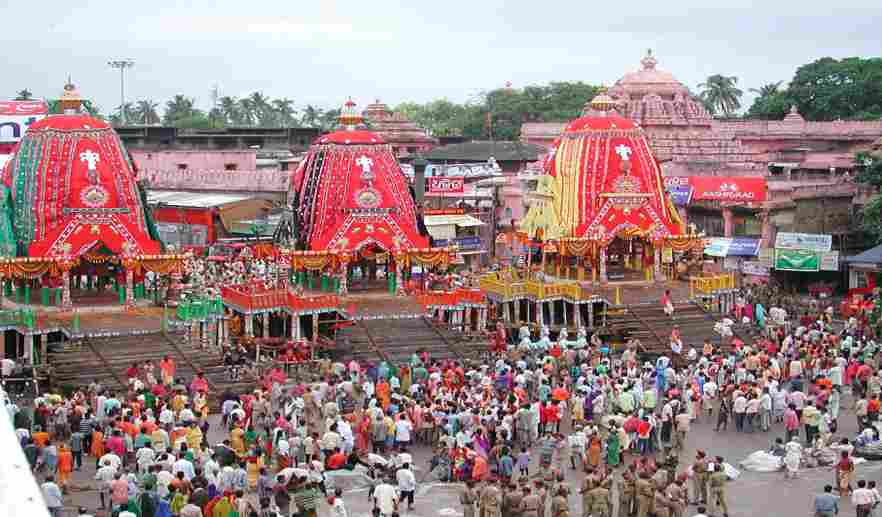
In the Jagannath temple, there are a total of thirteen festivals that are celebrated. Which phases thirteen festivals in twelve months.
The first one that is celebrated is Snana which means bathing. The deities are bathed with water mixed with sandalwood paste, camphor, and other incense. The second and the most popular is the Ratha Yatra. Three huge chariots with wheels were constructed for the deities and those chariots moved to the temple ‘Gundicha Bhar. Which are then followed by Sayana Yatra which means sleeping, Uttarsayana, and then Dakshinayana, Parsva Parivartan which means changing of sides, Utthapana means awakening, eighth is Pravarana means covering the body, then followed by Pusyabhiseka means coronation then Dola means swinging, Damanaka Bhanjana Chaturdasi and Akshaya Tritiya.
Covid Outbreak Situation
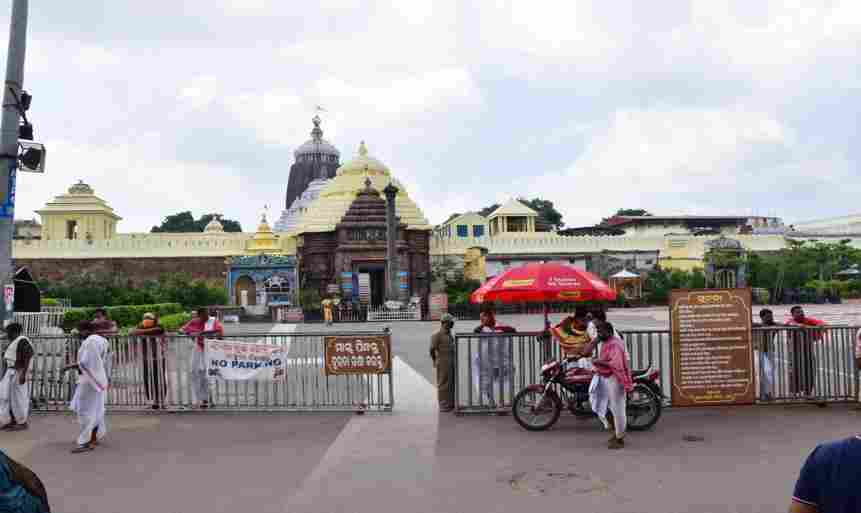
- As covid started and spread rapidly, it caused a lot of tension and problems in the economy. Because of covid religious places, schools, malls, etc. were closed. Religious places were restricted for people. In Jagannath temple, only priests were allowed to enter and maintain the temple. Devotees were very upset of the lockdown in Jagannath temple as they were devoted to Lord Jagannath, they wanted to gain blessings from him. But due to covid, their religious beliefs got hurt. Police were all alert and were roaming in the temple so no one can enter the temple.
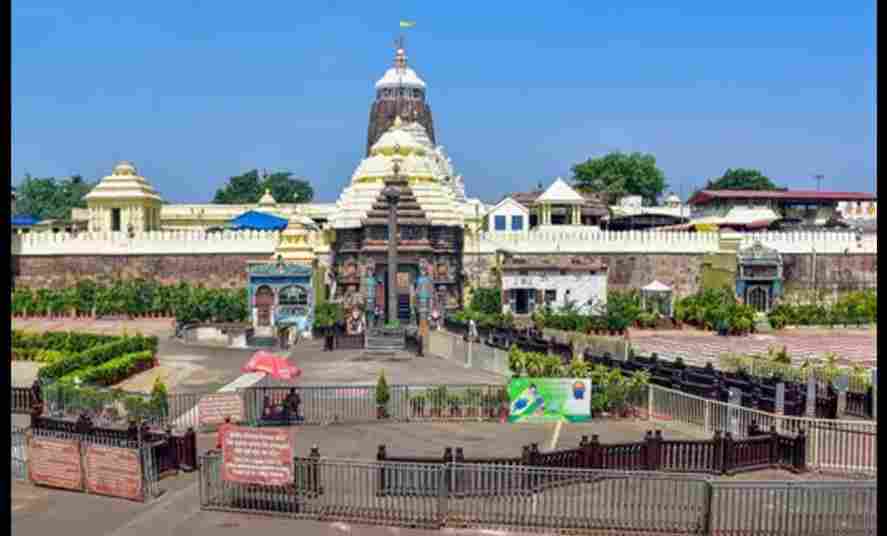
The shrine was closed to avoid big crowds around New Year amid rising COVID-19 cases and a sanitization exercise was also carried out in the shrine. Detailed arrangements have been made to ensure ease for devotees while sticking to all COVID-19 protocols.
Earlier, devotees required double vaccination certificates or RT PCR-negative reports obtained within 72 hours before entering the temple.
But now the situation is much better in Puri, so lockdown is lifted, and devotees are allowed to visit the temple at a particular time by following all the covid guidelines.
Latest Guidelines
After the covid cases got lessened in number, everything was reopening so as the religious places. Jagannath temple also got released from the lockdown with new guidelines for the devotees. As the reopening can increase the number of cases again new rules and guidelines were made mandatory.
Devotees are now allowed to enter the Jagannath temple without double vaccination certificates or RTPCR Covid-negative reports, the administration announced.
The decision was taken in view of the declining COVID-19 cases in puri.
Devotees will be allowed to enter the temple from 6 am to 9 pm on all days, except Sunday as on Sunday sanitation process will be done. It’s a new order issued by the Shree Jagannath Temple Administration (SJTA).
Wearing masks and maintaining social distance is mandatory inside the temple. Moreover, a separate queue has been made for senior citizens, it added.
Arrangements for drinking water have been made for the devotees when they wait in the queue. Furthering the rules will be reviewed periodically and revised instructions will be issued from time to time, keeping in view the evolving situation of covid.
Best Time To Visit Jagannath Temple
Rath Yatra is celebrated every year. Rath Yatra is one of the biggest. During Shukla Paksha of Ashada month (June-July) Rath Yatra is celebrated on Dwitiya Tithi.
Lord Jagannath Temple in Puri is a famous historic Hindu Temple where thousands of people pray everyday round of the year. The Temple is about a millennium old but surprisingly will be preserved in its originality. Devotees are allowed to enter the temple from 6 am to 9 pm on all days, except Sunday. On Sunday it is closed for sanitization, said a new order issued by the Shree Jagannath Temple Administration (SJTA). Wearing masks and maintaining social distance is still necessary to visit the temple. With the significant decline in COVID-19 cases across the nation has taken the decision to allow the entry of devotees into the temple on Sundays.
The entry to the temple is free and Jagannath temple darshan timings 05:00 am and 10:00 pm, offering free darshan to all devotees.
But if anyone is wishing to make a special puja booking, they can do so directly of the temple ticket counter. Moreover, one can book a Hotel near Jagannath Temple, Puri. Which saves up to 50% on the reservation. They speak various languages. Motels, Hotels, Secure Booking, Bed and Breakfasts, and every necessary thing are available there.
The Uniqueness Of Prasad
- The prasad which is offered in the Jagannath temple is known as Mahaprasad, which is cooked only in earthen pots by using firewood as fuel. The Mahaprasad is a steamed cooked food offered to Lord Jagannath first and then to Bimalaa Debi after which it becomes Mahaprasad. Further, Mahaprasad is freely partaken by people of all castes and creeds without any discrimination who visit the Jagannath temple. It is a belief that when the steam-cooked food is carried to the Lord in slings of earthen pots and no essence can be smelled from the food. But when the same is carried back to the sale point which us Anandabazar after being offered to the Lord, a delicious smell spreads along in the breeze to the pleasant surprise of the devotees. Then the food is blessed. Mahaprasad is a unique prasad that consolidates the human bond, sanctifies, sacraments, and grooms the departing soul for its journey upwards.
Summary
There are many books in Odia and in different languages about the Shri Jagannath temple. In the literature of Odia, there are many poems and historical stories that talk about the mystery and attractiveness of the Jagannath temple. It has beautiful architecture and sculptures all around the temple. Different other shrines are also present in the massive Jagannath temple of Puri. The Jagannath temple which we see in Puri is not the original temple. The original temple was destroyed by Firoz Shah Tujhlaq. He became an orthodox and bigotry towards the later part of his reign. During his expedition to Jayanagar in 1360, he destroyed the Jagannath temple. The old Jagannath temple is 1900 years old.
While visiting Jagannath temple one should not carry mobile phones, cameras, or shoes. Arrangements have been made for keeping shoes. Shoe stands are placed just outside the Jagannath temple, where one can keep their shoes and hand over their phones and camera. A strict checking is done before entering the temple. There are lots of ‘Pandas’ who keep on guiding inside the temple.
Shree Jagannath Puri Temple is one of the most impressive monuments of the Indian State Odisha, was constructed by a famous king of the Ganga Dynasty Ananta Varman Chodaganga Deva dating back to the 12th century at the seashore Puri. The main temple of Jagannath is an impressive and amazing structure constructed in Kalinga architecture, with a height of 65 meters placed on an elevated platform. There are so many festivals of Lord Jagannath during the year observed in Puri. A large crowd always gathered to witness Lord Jagannath during this festival.
Jagannath temple is a massive architecture, which attracts its devotees from far across the countries. People always want to see and experience something new and the Jagannath temple shows them the most beautiful and heart-touching gift. The blessings of Lord Jagannath and the beautiful architecture capture the eyes of the visitors.
During COVID-19 everything was in hault. No visitors were allowed to enter the temple. But as the covid cases gradually slowed down visitors or devotees were allowed to enter the temple with vaccination certificates.
That was also gradually being cut off when cases were at their lowest. Now Jagannath temple is fully opened, and everything has returned to its original form.
The Jagannath temple is one of the four pilgrimages in India which holds the utmost beauty in its architecture and rituals. Along with its mysterious activities, it attracts many people. It’s prasad which is always tastier for the people who visit Jagannath temple.
Many visitors visited the Jagannath temple and experienced the mysterious activities that take place in the temple. Many documentary movies are also made about these strange activities. But no single research has shown how these activities take place.
So, this is assumed by the devotees and the people there that it’s the blessings of Lord Jagannath. He showers his blessings on every creature on the earth.
Lord Jagannath is immortal and has been prayed to for such a long time. And he has a special place in the devotees and the people of Puri. Almost everyone who is residing in Puri has once visited the Shri Jagannath temple in their entire lifetime.
It is a true blessing that Lord Jagannath’s temple is in the religious land of the world. His whole body describes his eternity and kindness.
People from different countries also visit the Jagannath temple. They take part in all the festivals that are celebrated there.
Top 13 Interesting Facts About Jagannath Puri Temple
It took the time and effort of three generations to brick up the homogenous walls of the Jagannath temple.
There are many unexplained activities that have caught the eyes of travelers.
The idols in the Jagannath temple are made of wood. They are replaced during Nabakalebara.
During Ratha Yatra, the three deities are mounted on their decorated chariots and visit their maternal aunt in the Gundicha temple by going across the street.
Lakhs of devotees came to see the great Ratha Yatra. They stand beside the street and pray for their well-being.
During the 12th century CE King Anantavarman Chodaganga, of the Ganga dynasty built this temple. And it was then renovated by the subsequent kings of the Ganga dynasty and by the Gajapatis.
The Jagannath temple itself has over 30 other small temples in it. Vimala temple and Narasimha temple are much older than the Jagannath temple.
Jagannath temple is one of the pilgrimage sites of Char Dham. The other three are Rameswaram, Dwarka, and Badrinath.
The Jagannath temple was plundered eighteen times.
Lord Jagannath is also worshipped as Vishnu, Narayana, Krishna, Lord Balabhadra, and Shesha.
The name ‘Shri Mandir’ is common to the locals of Puri for the Jagannath temple.
The Jagannath temple is gigantic and has over six thousand priests worshipping every day.
The temple confines are surrounded by a high wall which is pierced by four gates.

For deep details, you can read the full article. & Editorial Click the link below :




